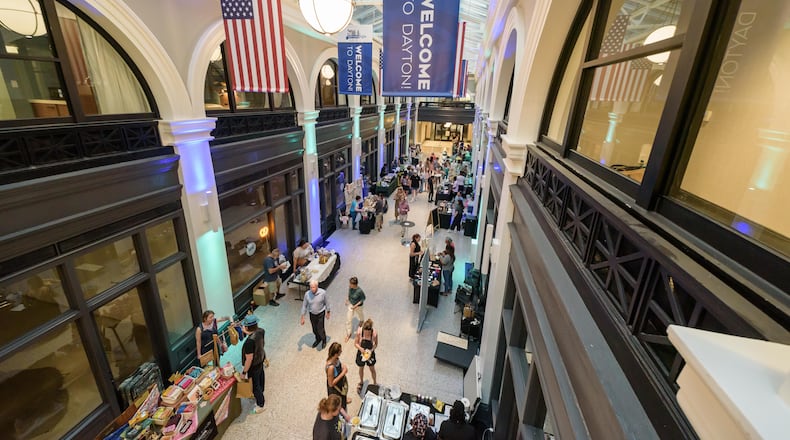The state’s newest operating budget, passed by lawmakers last week, allows for the state to grant up to $75 million in historic building preservation tax credits per year in 2026 and 2027 — a $15 million yearly increase over the current biennium. However, it is $45 million and $15 million, respectively, short of what DeWine and the Ohio House wanted.
Lawmakers also voted to “sunset” the credit after fiscal year 2027 by prohibiting the Ohio Department of Development, which administers the program, “from approving any further credits unless specifically authorized to do so by the General Assembly,” according to a state budget document.
DeWine this week vetoed that part, writing in a veto message, “This tax credit program is essential for the development of underutilized historic buildings in Ohio communities, and the sunset of the credit will jeopardize the gains Ohio has made in preserving and rehabilitating such buildings.”
Ohio House Speaker Matt Huffman, R-Lima, told this news outlet that he likes the historic tax credits, when they’re used properly. He explained that “sunset” language was included more so to create a sense of urgency with developers that are awarded credits, as some idly sat on the credits instead of using them.
“It doesn’t mean that when we get to 2027 that we won’t re-up on that same thing,” Huffman said. “I think it’s probably an indicator (of) ‘Use it or lose it.’ This program may be back, it may not be. The legislature can look at it then.”
The action that might have been meant to create a sense of urgency for developers unsettled general proponents of the program, like Senate Minority Leader Nickie Antonio, D-Lakewood.
“They are incredibly important in bringing in jobs and money in our communities,” Antonio told this outlet shortly after the Senate passed the budget. “I mean, they really are a benefit.”
Antonio said some members of Republican leadership “don’t like” tax credits such as the Ohio Historic Preservation Tax Credit Program, which has helped subsidize rehabilitation and reuse projects at the Dayton Arcade, the Delco building, the Grant-Deneau Tower and multiple commercial structures in the Fire Blocks District.
“What’s going to be the responsibility of the legislators going forward is to keep on top of making sure that they come back,” Antonio said.
Across the aisle, Senate Finance Chair Jerry Cirino, R-Kirtland, said his peers in the chamber’s GOP caucus view historical tax credits as “an important element in our total economic development picture,” alongside brownfield remediation grants and mix-used development credits.
“Don’t confuse it to mean that after the sunset period is over that the program disappears and will never be done again,” Cirino said. “I think what we’re saying here is that the appropriation to fund those activities will need to be renewed each biennium by the legislature.”
Credit: Tom Gilliam
Credit: Tom Gilliam
Dave Williams, board chair of Heritage Ohio, says the organization has been working hard to let lawmakers know that these credits are a vital economic development tool.
“We often say the historic buildings are one of Ohio’s natural resources,” he said.
Williams is the vice president of real estate development with Cross Street Partners, which is one of the groups that have helped redevelop the Dayton Arcade. Developers have invested about $164 million into the Arcade, which consists of nine interconnected buildings that have been converted into housing, offices, retail and restaurant spaces, hotel rooms and other uses.
The Arcade complex sat vacant for about 30 years, and Williams said its revitalization and other important local adaptive reuse projects would not be possible without state and federal historic tax credits.
The state has paid out about $733 million in state historic preservation tax credits, which supported more than $6 billion in completed projects — which is an 8-to-1 return on investment, Williams said. These credits have helped rehabilitate hundreds of buildings across Ohio, including more than 20 in Dayton.
The credits that were awarded to Dayton projects were for proposed investments that combined exceed $468 million. However, some projects did not pan out or have yet to make substantial progress.
Ohio has more listings on the National Register of Historic Places than all but two other states (California and Massachusetts). More than 4,200 buildings, structures, sites, districts and properties in the Buckeye State are on the National Register of Historic Places, including about 480 in Butler, Champaign, Clark, Greene, Miami, Montgomery and Warren counties.
The register contains properties that are recognized for their significant contributions to American history, art, architecture, engineering and culture.



